CAMBODIA
History

History

Cities in CAMBODIA
| Phnom-penh |
History
Antiquity
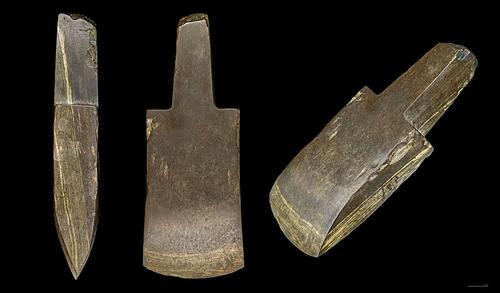 Axes from Samrong Sen CambodiaPhoto: Didier Descouens CC 4.0 International no changes made
Axes from Samrong Sen CambodiaPhoto: Didier Descouens CC 4.0 International no changes made
Little is known about Cambodia's earliest history due to the lack of reliable historical material. Written sources have all disappeared, only inscriptions and pictures on temples are used as historical sources.
Archaeological research has shown that present-day Cambodia was already inhabited 6,000 years ago, although the question of the early inhabitants has still not been answered.
An important archaeological site from this period is the caves of Laang Spean, where hunters and gatherers lived. The pottery method of that time is still used today.
Another important site of archaeological material is Samrong Sen. Approx. 3,500 years ago, the inhabitants of this settlement lived off shifting farming and used animals to work the land. Approx. 2500 years ago, in the Iron Age, agricultural tools were made and lived in wooden and bamboo houses on stilts. Then, as now, people mainly lived on rice cultivation and fishing.
Funan and Chenla Empire
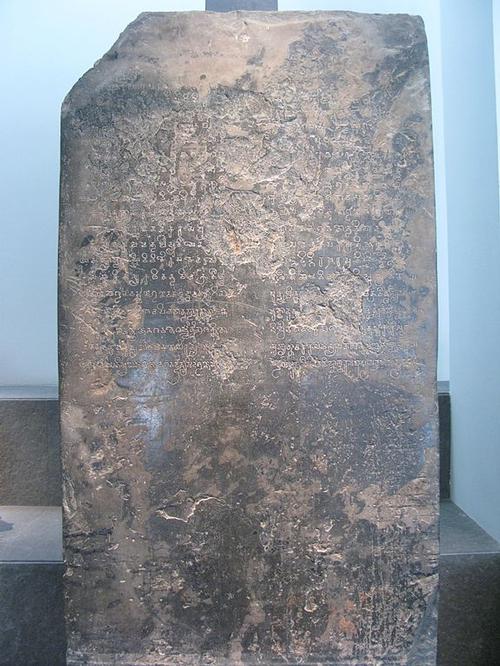 Cambodia FunanPhoto: Public domain
Cambodia FunanPhoto: Public domain
Between the 1st and 8th century AD. the first Cambodian kingdoms emerged, clearly influenced by India and brought to Cambodia through merchants. For example, the script was based on Sanskrit and Hinduism, Buddhism and the caste system were adopted.
Unreliable Chinese sources mention the 3rd century Funan Empire. This empire would have included the southeastern part of present-day Cambodia and the Mekong delta. The strategically located empire is said to have been founded by the South Chinese Mon-Khmer. Cambodia is believed to have been a loose federation of fighting empires at the time, of which Funan was one of the most important. Around the 5th century, the Funan empire reached its peak, but then it fell into decline due to civil wars.
In the late 6th century, Funan was finally wiped from the map by the puppet state of Chenla and started the pre-Angkor period, which lasted until 802. Chenla, founded by Bhavavarman I, also expanded rapidly, but fell apart in two parts due to a family struggle in the early 8th century. From the south of Laos they continued as Chenla Land, from the southeast of Cambodia Chenla Water continued. Not long after, Chenla Water faced the Javanese Sailendra dynasty.
The Empire of Angkor (802-1432)
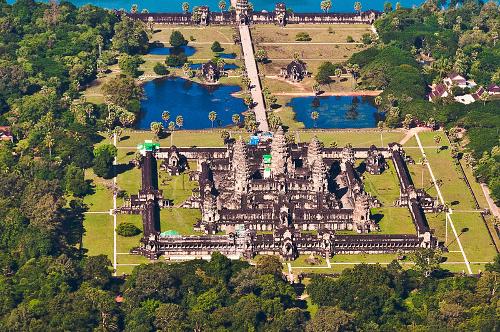 Angkor Wat CambodiaPhoto: Mark Fischer CC 2.0 Generic no changes made
Angkor Wat CambodiaPhoto: Mark Fischer CC 2.0 Generic no changes made
In the early 9th century, a Khmer prince raised in Java returned to Chenla Water and broke away from the Sailendra dynasty. The areas inhabited by the Khmer were declared independent by him and he had himself crowned as "devaraja", the divine king Jayavarman II. He would become the founder of one of the most powerful Southeast Asian empires ever, the Empire of Angkor, which would last 600 years. He called this empire Kambujadesa, later corrupted to Cambodia and Kampuchea. Jayavarman eventually moved the capital to Hariharalaya, now known as Roluos. Characteristic of the Angkor empire were the beautiful temples and the sophisticated irrigation system. Under King Indravarman I, the capital was Angkor, also called Jasodharapura. Periods of unity and growth alternated with periods of division and decline. In the early 11th century, the divided empire was reunited by Suryavarman I and expanded to include large parts of Laos and Thailand.
Cambodia experienced a golden period under his successor Suryavarman II. He conquered the empire of Champa in the south of Vietnam and established relations with China. He also had built Angkor Wat, one of the largest religious buildings in the world. However, this cost so much money that little money was left for the army. Champa took advantage of this again and conquered the capital Angkor in 1177; king Suryavarman II was murdered. It was not until Jayavarman VII (1181-1219), the last great king of Angkor, that the Ham were expelled. Inspired by this success, he went ahead and expanded his empire to unprecedented size. The Khmer Empire at the time included present-day Thailand, Laos, and parts of Burma, Vietnam, and Malaysia. Buddhism was introduced as a state philosophy under this king.
After the death of Jayavarman VII, the empire quickly fell prey to powerful states in the neighboring countries. Socio-economic, military and religious factors played an important role in this, but due to the tremendous construction activities there were also too few farmers to work the land. Buddhism also caused more meditation than work, with famine as a result.
In the mid-14th century, Thai kingdoms (Sukhotai) invaded Angkor, and in 1431 the capital was permanently taken. The last king, Ponhea Yat, left Angkor for Phnom Penh, ending six centuries of Cambodian supremacy. At the beginning of the 15th century, the capital, threatened by the Thai, was abandoned: the kings of Cambodia settled in Phnom Penh.
Period up to the French colonial era
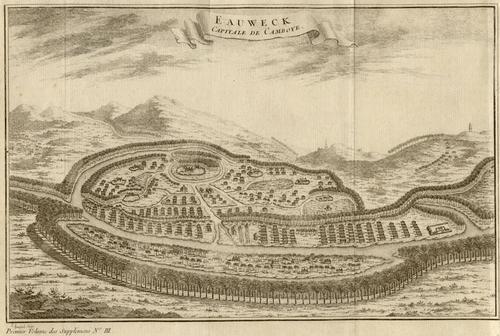
The period up to the French colonial era was one of stagnation in many areas. Cambodia did come into contact with the outside world more and more because it was located at an important trade hub of rivers, including the Mekong. However, Cambodians was unable to take advantage of this due to a weak authority and various wars with Thailand.
In the 16th century, Thailand was under constant attack by Burma and King Ang Chan benefited from this. He recaptured western Cambodia from the Thai and moved the capital Phnom Penh to Lovek.
In the second half of the 16th century, under King Satha, Portuguese missionaries entered Cambodia. The Cambodians hoped that they would be helped by the Portuguese against the Thai occupiers, but that was disappointing. In 1594 Lovek was taken back by the Thai, who put a stooge on the throne.
After this began the period of the "dark ages", when Cambodia lay in the line of fire between the two powerful neighbors Thailand and Vietnam. The weak Cambodian kings then sought protection from Thailand and then again from Vietnam. In 1620 the time had come again: King Chey Chettha broke away from Thailand and sought protection from Vietnam. The capital was also moved once again, now to Udong, located northwest of Phnom Penh.
In 1779, King Ang Eng, the founder of the current royal family and one of the ancestors of the current King Norodom Sihanouk, took office. But under his rule the Thai got more and more grip on Cambodia and some Cambodian provinces were occupied. At the same time, the Vietnamese conquered the Mekong Delta, causing Cambodia to lose free passage to the sea.
Cambodia becomes French colony
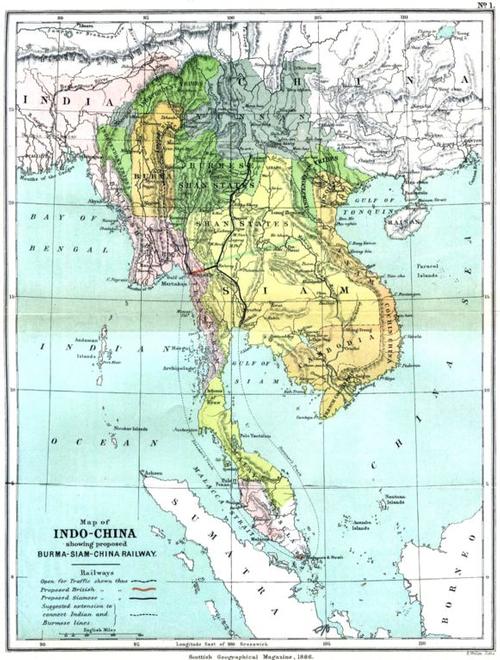 French Indochina Map 1886Photo: Public domain
French Indochina Map 1886Photo: Public domain
From the mid-19th century, the influence of the French became very noticeable in Indo-China or Cochin-China. Shortly after Norodom's coronation in 1864, he ceded the provinces of Siem Reap, Sisophon and Battambang to Thailand in a treaty ratified by Napoleon III of France in 1867.
On April 17, 1864, Norodom signed a treaty with the French, making Cambodia a French protectorate. With this, Norodom tried to end the domination of the Thai and the Vietnamese. However, this did not make much for Cambodians, as in 1884 the country became a colony of France and ruled by a French "resident superior". The domestic government tolerated by France amounted to very little and all economic gains disappeared into the pockets of the French. In 1887 Cambodia joined the Union of Indochina, along with Vietnam and Laos.
After Norodom's death in 1904, two banter figures took the throne, first Norodom's half-brother, Sisowath, and then King Monivong (1927-1941). In 1907 France concluded a treaty with Thailand under which Siem Reap, Battambang and Sisophon were declared Khmer territory again. It was remarkable that there was no nationalist activity whatsoever in Cambodia. However, this was completely directed by the French, who gave the population the idea that the king was in charge and that they were completely independent from the French.
However, this changed during the Second World War. The pioneer of the first nationalist movement was Son Ngoc Thanh, a staunch supporter of one of the Buddhist schools. In 1937 he founded the magazine Nagaravatha, in which he stood up for more independence with regard to France and received support from the Japanese.
After the death of King Monivong in 1941, the French put forward his 19-year-old grandson Norodom Sihanouk. Although inexperienced, he immediately claimed Cambodia's independence. This seemed to be successful in March 1945 when the Japanese overthrew the French colonial administration and replaced it with a government led by Sihanouk. However, when the Japanese capitulated, the French wanted to continue their rule, much to the dismay of Sihanouk and the Cambodian elite. Protests against the colonial presence of the French in Cambodia intensified and a nationalist movement, the Khmer Issarak, the "Free Khmer" inevitably arose. The French responded by limiting Sihanouk's power even further. Nevertheless, the Cambodians' wishes were somewhat met by giving the country the status of an autonomous nation within the French Union in 1946.
In 1952 Sihanouk staged a so-called royal coup. He suspended the constitution, appointed himself head of government and dissolved parliament. After that, he sought to gain support for his bold initiative around the world. This "publicity stunt" was very effective, however, because on November 9, 1953, the French government handed over sovereignty to the Cambodian government and Norodom Sihanouk became head of state.
The Sihanouk era
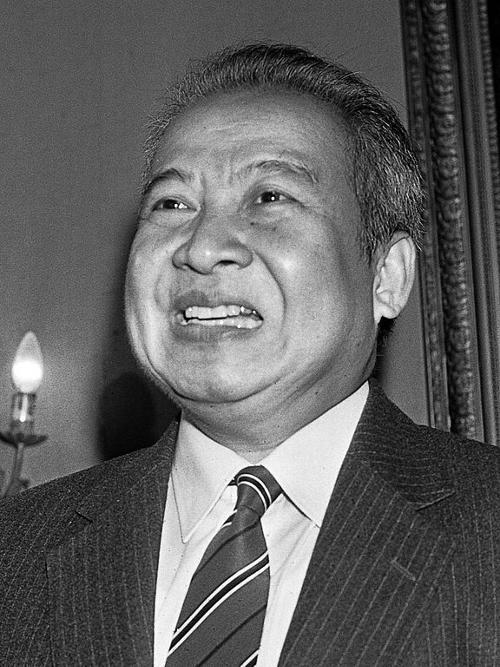
In March 1955, Sihanouk made an apparently strange decision. He resigned as king in favor of his father Norodom Suramarit. The intention behind this was that he now had his hands free to get involved in politics. He founded a political party, the Socialist People's Movement (Sangkum Reastr Niyum), which took all seats in parliament until 1966. The population took for granted that elections were never fair, and the popularity of Sihanouk made this corruption accepted.
As far as foreign policy was concerned, he kept a neutral course and blew with all winds, but in 1963 a change of course followed. The United States forged friendly ties with South Vietnam and Thailand, long-time enemies of Cambodia. From that time on, Sihanouk refused to accept help from the Americans any longer and even suspended all diplomatic relations. In 1966 Sihanouk pulled his country into the Indo-Chinese war, as it were. He gave the North Vietnamese permission to use the Ho Chi Minh route across Cambodian territory towards South Vietnam. In 1969 all hell broke loose over eastern Cambodia when American bombers dropped more than half a million tons of bombs over the area. This cost the lives of hundreds of thousands of Cambodians and, moreover, a large flow of refugees started. Only in 1973 did the American attacks stop.
Sihanouk also had a hard time in domestic politics. Leftist intellectuals as well as the urban middle class turned against him.
General Lon Nol, who became prime minister in 1969, was partly responsible for the coup d'état of March 18, 1970 in which Sihanouk, who was at that time abroad, was deposed. Cambodia proclaimed a republic on October 5, 1970, and Lon Nol remained prime minister until he became head of state in March 1972.
The rise of the Khmer Rouge
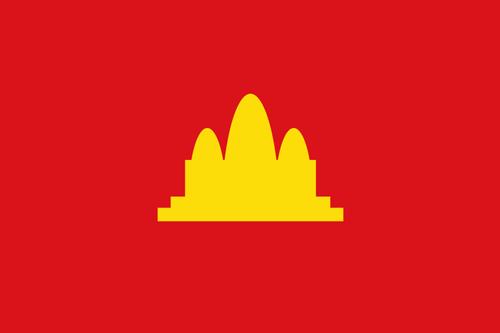
Immediately after Lon Nol took office, resistance started, especially by the Khmer Rouge, who were supported in their guerrilla activities by, among others, North Vietnam. Lon Nol was supported by South Vietnam and the US Air Force, but failed to win the fight against the guerrillas.
In early April 1975, he went into exile a few weeks later the Khmer Rouge entered Phnom Penh. They recognized Sihanouk as head of state, but he resigned a year later. He was succeeded by Khieu Samphan with Prime Minister Pol Pot (actual name Saloth Sar). Three different movements emerged within the Khmer Rouge, of which the radical Pol Pot managed to wipe out the other two groups in 1976.
The radical nature of the Pol Pot group was reflected in the abolition of private property and a forced collectivization in the economic and social spheres. She also wanted to conquer nationalist parts of Thailand, Laos and Vietnam.
The regime of Pol Pot
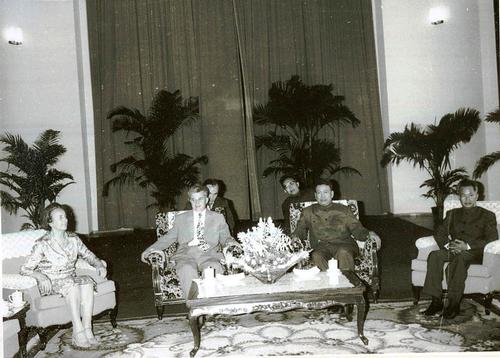 Pol Pot and Nicolae CeaucescuPhoto: Public domain
Pol Pot and Nicolae CeaucescuPhoto: Public domain
On January 5, 1976, the country was officially named Democratic Kampuchea and until 1978 it was completely isolated. Pol Pot ensured very drastic political and social measures. For example, millions of residents from the capital Phnom Penh were forced to move to the countryside. Of the three million people who inhabited the capital in 1975, only 23,000 were left by January 1979! Most of these people were farmers who had fled to Phnom Penh during the American bombings. Other cities were also depopulated to work in the countryside.
In addition, there was famine, disease outbreak and political and social reforms resulted in mass executions. In 1978 many Cambodians fled to Vietnam and Thailand, but resistance against Pol Pot also arose.
In December 1978 the invasion of Cambodia by FUNSK, supported by Vietnamese troops, began. On Jan 7 1979, Phnom Penh and the important port city of Kompong Som had been conquered, and the People's Republic of Kampuchea was proclaimed on January 11, 1979. A government was formed under the leadership of Heng Samrin, which in September 1979 was recognized by only 31, mostly communist, states. The United Nations continued to stand behind the Pol Pot government-in-exile as the legitimate representative of the Cambodian people.
In August 1979, ex-Prime Minister Pol Pot was sentenced to death in absentia by a revolutionary people's court in Phnom Penh. The Heng Samrin government also continued to encounter resistance domestically. Pol Pot's Khmer Rouge troops continued the guerrilla from the northern border provinces.
In addition, guerrilla groups were operating in the early 1980s that turned against the remnants of the Pol Pot regime as well as the government of Heng Samrin. Negotiations between the warring parties were organized at the insistence of the ASEAN member states in particular, as the occupation of Cambodia by Vietnam was perceived as a threat to peace and stability in the region.
Eighties and nineties of the 20th century
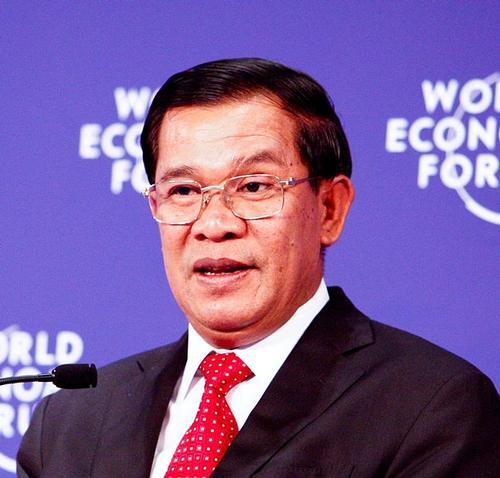
The coalition government (in exile), made up of the Khmer People's National Liberation Front (KPNLF), the Sihanoukists and the Khmer Rouge led by Khieu Samphan, was seen as the legitimate government by China, the United Nations and the West. In April 1989, Prime Minister Hun Sen announced that Vietnamese forces would withdraw from Cambodia by September 1989. In May 1989, the official name in Cambodia was changed and the flag was also changed.
After the withdrawal of the troops, elections were promised, at the same time the guerrilla activities in the country increased. After the failure of the international peace conferences in 1990, a laborious negotiation process began between the Cambodian resistance groups and the government still installed by Vietnam. Finally, Prince Norodom Sihanouk returned in November 1991, after the warring parties under the supervision of the UN Security Council signed the peace agreement on October 23, which paved the way for the arrival of international troops, the UN Transitional Authority in Cambodia (UNTAC). These troops were to supervise the ceasefire, partially disarm the four warring factions and thus allow free elections to be held.
The four parties, together with UNTAC, formed a transitional government, the Supreme National Council (ONR). The Khmer Rouge, led by Khieu Sampan, withdrew all its representatives from Phnom Penh in April 1993, where they participated in consultations and government since late 1991. The free elections held in May 1993 were won by the United National Front for an Independent, Neutral, Peaceful and Cooperative Cambodia (Funcinpec).
It was noteworthy that the Khmer Rouge had not disrupted the elections, but the progress of the peace process was seriously jeopardized by the refusal of Democratic Kampuchea (DK, aka the Khmer Rouge) to hand in arms and register voters in districts under her authority. At the beginning of 1994, fighting broke out between the government army and the Khmer Rouge and Sihanouk's attempts to get the Khmer Rouge to the negotiating table failed.
This problem had repercussions on the development of the economy, while the abuse of power, corruption and terror of the Khmer Rouge caused much misery.
In the fall of 1996, the Khmer Rouge broke up after a dispute between the previously thought dead leader Pol Pot and his brother-in-law Ieng Sary. In June 1997, the second Prime Minister Hun Sen staged a successful coup. First Prime Minister Novodom Ranariddh, who was in Thailand, was relieved of all his duties and sentenced in absentia in March 1998 to five years in prison for arms smuggling and 30 years for collaborating with the Khmer Rouge. Not long after, however, he was pardoned by his father, King Sihanouk. This allowed the parliamentary elections advocated by the international community to proceed. These July 26, 1998 parliamentary elections were won by Hun Sen's Cambodian People's Party with 41.4% of the vote, and Ranarridh-led Funcinpec with 31.5% of the vote. With the results of the fairly fair elections and the formation of a shaky coalition government in the international community on November 30, Cambodia's strongman Hun Sen hoped to be reintroduced into the international community. Unfortunately for Cambodia, neither ASEAN nor the UN made much sense for this, with the result that foreign investment failed to materialize.
Major Khmer Rouge leaders such as Khieu Samphan and Nuon Chea surrendered in December 1999. The remaining Khmer Rouge laid down their arms and recognized the legitimate authority of Hun Sen. There was increasing evidence that Pol Pot had committed suicide on April 15, 1998. In April, Cambodia was officially admitted to the Association of Southeast Asian Nations (ASEAN) and financial support from the IMF and the World Bank resumed in late 1999.
2000 - Present
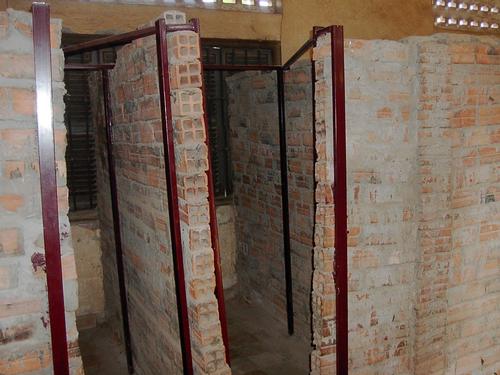 Tuol Sleng torture center CambodiaPhoto: Adam Carr CC 3.0 Unported no changes made
Tuol Sleng torture center CambodiaPhoto: Adam Carr CC 3.0 Unported no changes made
In 2000, after long insistence from the UN, Hun Sen agreed to establish an Extraordinary Tribunal for the Trial of Crimes during Pol Pot's Khmer Rouge regime in the period 1975-1979. The role of the United States and the entire international community should also be considered, but that was, of course, a bridge too far. A compromise was reached with the later US presidential candidate Senator John Kerry, in which it was agreed that only the former Khmer Rouge leaders would be tried. Ultimately, however, the main Khmer Rouge leaders remained at liberty and even returned to politics.
It became clear how much support Pol Pot's pernicious regime had received from the United States and China, totaling hundreds of millions of dollars. At the end of May 2000, the government was rewarded for setting up the tribunal. Cambodia was promised USD 548 million in aid at the annual donors' conference in Paris.
On November 26, 2000 in Phnom Penh a bloody clash came between the right-wing movement, Cambodia Freedom Fighters, better known as the Khmer Serei or Free Khmer Movement, and the army and police; eight people were killed and fourteen people were injured. The Free Khmer blamed Hun Sen for a lax policy on controversial border issues, and the approximately 100,000 Vietnamese living in Cambodia were a thorn in their side.
Cambodia was also hit by severe flooding this year. 173 people were killed and damage to agriculture and infrastructure was estimated at $ 50 million.
Of the six main Khmer Rouge leaders, only Kang Kek Iev, better known as Deuch and head of the torture center Tuol Sleng, and Ta Mok, a notorious Khmer Rouge general, were imprisoned in 2001. The others, Nuon Chea, Pol Pot's second husband, Khieu Sampan, former prime minister, Ieng Sary and Ke Pauk, a regional leader, were still at large. The chance of acquittal by the tribunal was considered small.
China exerted great political and economic pressure behind the scenes to postpone the first court session. President Jiang Zemin, and the second man in the Chinese Communist Party, Li Peng, made it clear that China would not comply with the United States' demand to establish such a tribunal. Beijing also did not want the issue of human rights in Cambodia to be put on the agenda.
At a meeting in Tokyo on June 13, the World Bank-led group of donors pledged to Cambodia US $ 615 million for the coming year
In August 2001, primaries were held for the heads of the administrative village communities. Remarkably, ex-members of the Khmer Rouge and the Cambodian People's Party had held the most important positions at the local level for more than twenty years. Political violence was commonplace, especially against members of the opposition from Sam Rainsy and the Sihanouk-minded FUNCINPEC.
This year saw too many problems with the tribunal. Hun Sen's government refused to guarantee significant guarantees of the independence, impartiality and objectivity of Cambodian judges.
Notorious criminals of the Khmer Rouge regime have still not been convicted and others such as Ieng Sary and Khieu Sampan are living undisturbed and comfortable lives. On the positive side, in December this year, Sam Bith, responsible for the murder of three foreign tourists in 1994, was sentenced to life imprisonment.
Municipal elections on February 3 were won by the ruling CPP. Even now, preparations for the elections were dominated by violence.
The economy performed poorly in 2002. Donor aid fell 25% and external debt rose to more than $ 3 billion. Important economic sectors such as the clothing industry and tourism stopped growing and caused a sharp decline in general growth. Cambodia reached one of the highest places in the ranking of the most corrupt countries.
International tensions arose after members of minority groups from Vietnamese border provinces sought refuge in Cambodia as a result of the political unrest in the Central Highlands of Vietnam since early 2001.
Two locations in Cambodia were designated to receive the other refugees temporarily with the support of the UN refugee organization UNHCR. In June 2002, about 900 refugees left for the United States, where they received political asylum.
In 2003 major problems arose with Thailand during the election campaign of the July 27, 2003 parliamentary elections. It all revolved around Angkor Wat's alleged Thai origins. The Thai embassy was set on fire and Thailand temporarily cut all ties with Cambodia. The government leaders of both countries managed to prevent worse after mutual consultation.
The elections, which went fairly smoothly, were subsequently won by the Cambodian People's Party (CPP) with 73 of the 123 seats. This allowed Prime Minister Hun Sen to remain in power for another eight years. Still, a coalition government was needed to rule, but that took a lot of effort. Ranariddh's FUNCINPEC and the Sam Rainsy Party (SRP) initially refused, but under pressure from King Sihanouk, both party leaders agreed to a coalition government led by Hun Sen. Ranariddh was awarded the chairmanship of the parliament and a member of the SRP became deputy chair.
In March 2003, three members of the Southeast Asian Muslim extremist network Jema'ah Islamiyyah were arrested in Cambodia.
On September 11, 2003, the World Trade Organization (WTO) Ministerial Conference in Cancun, Mexico, decided that Cambodia and Nepal, as the first poor countries, could join as members. The SARS epidemic that affected Vietnam and China in 2003 also had serious consequences for Cambodia. The tourism industry lost millions of dollars in revenue, causing economic growth to lag behind 2002.
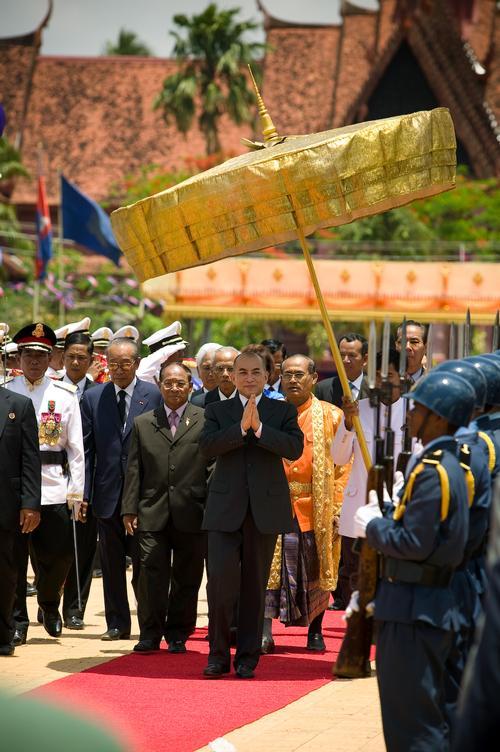
Cambodia will have a new government on 23 July, which, with 171 (sub) ministers, has more members than the current parliament (123). The coalition partners CPP of Hun Sen and FUNCINPEC of Norodom Ranariddh henceforth shared power under the leadership of Prime Minister Hun Sen. King Norodom Sihanouk abdicated on October 6 and is succeeded by his son Norodom Sihamoni Sihamoni is known to be outside of politics.
Prime Minister Hun Sen has sought to further marginalize political opponents in recent years. Sam Rainsy's main opposition party SRP was sidelined. Rainsy himself lost his parliamentary immunity, fled abroad and was sentenced in absentia at the end of 2005. After the opposition had tightened their thumbs, especially in the last quarter of 2005 (a wave of arrests and the conviction of human rights activists for libel), a change of course followed in early 2006. Four arrested activists were released and charges against them for libel dropped. To everyone's surprise, Hun Sen then informed exiled opposition leader San Rainsy that he would settle their feud. Rainsy returned to Cambodia in February 2006 and Cheam Channy, a prominent member of the SRP, was released. The parliamentary immunity of both has been restored. Prince Ranariddh resigned as Speaker of Parliament in March 2006, after which he spent most of the time abroad. On October 18, 2006, FUNCINPEC members voted for his removal as party leader. Ranariddh was succeeded as Speaker of Parliament by Heng Samrin of the CPP. Hun Sen is in the process of tightening its grip on power, while FUNCINPEC is losing its influence. In July 2008 Hun Sen claims victory in the parliamentary elections. EU observers report that the elections have not met international standards. In February 2009, former Khmer Rouge leader Duch is being tried in Phnom Penh. He was sentenced to 35 years in prison in 2010. In the years 2012 and 2013, there are tensions at the border with Thailand. Presidential elections will be held in July 2013. Hun Sen is given a new five-year term. In September 2013 there have been massive protests against the result of the election. The opposition is boycotting the opening of parliament. Prime Minister Hun Sen has been in power for 30 years in January 2015. In March 2017, Ken Soka is elected as opposition leader and in September 2017 he is charged with treason. In 2018, a law came into effect that criminalizes insulting the king. Hun Sen will be prime minister for 35 years since 2020, next election will be held in 2023.
Sources
Canesso, C. / Cambodia
Chelsea House Publishers
Colet, J. / Cambodia handbook
Footprint Handbooks
Green, R. / Cambodia
Lucent Books
Kleinen, J. / Cambodja
Koninklijk Instituut voor de Tropen ; Novib
Peterse, L. / Cambodja
Gottmer/Becht,
Wulf, A. / Cambodja, Laos
Het Spectrum
CIA - World Factbook
BBC - Country Profiles
Copyright: Team The World of Info